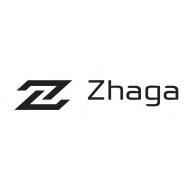Zhaga is a worldwide consortium of companies involved in the lighting industry. Founded in February 2010, it began life with widespread backing within the sector.
The world Zhaga has no specific meaning; in fact, it coincides with the name of a waterfall in Sichuan (China). Nevertheless, the Zhaga logo identifies interchangeable LED light sources.
Who is a member of Zhaga?
At present Zhaga is made up of 277 companies around the world from all lighting sectors, including, for example: manufacturers of luminaires, LED modules, drivers, LEDs, lighting fittings in general (controllers, dimmers, connectors, optics, lamp holders, etc.), test equipment and tool makers, certification and test laboratories, and companies involved in product research and development.
The following companies, among others, are Zhaga members: Philips, Osram, Tridonic, Trilux, Citizen, BJB, Wago, Cree, Legrand, UL, VDE, LG, etc. ELT joined the consortium on 18 April 2011.
What is its mission?
To enable the interchangeability of LED modules and their control equipment.
Zhaga provides stable design platforms for LED modules in order to ensure this interchangeability of LED light sources.
This “interchangeability” endows luminaire manufacturers with greater freedom of choice with respect to the components that can be used in their luminaires without any need to adapt them, while at the same time achieving market confidence in LED lighting solutions that drives growth in their use and, therefore, the rapid spread of LED modules.
Why is there a need for a consortium of this type in the LED lighting sector?
LED is a practically new technology that knows no limits in terms of size, shape, performance and type of interconnection. This allows for a high degree of flexibility and creativity; nonetheless, in the absence of any agreed specifications, it also causes confusion in the market and a lack of interoperability among LED product manufacturers.
How does Zhaga go about fulfilling its mission?
It develops specifications for different types of LED light sources, which are based on four interfaces that make it easy to identify interchangeable products:
- Mechanical (e.g. Dimensions, etc.)
- Thermal (e.g. Heat Resistance, heat dissipation, etc.)
- Electrical (e.g. Power, etc.)
- Photometric (e.g. Lumens, light distribution, CRI, CCT, etc.)
These specifications are completely voluntary; therefore, they do not have to be complied with by any government or regulatory standard.
No maximum number has been proposed for the future. Zhaga will only introduce those that it feels are useful to ensure the interchangeability of LED light sources.
8 Zhaga specifications or books have been defined to date:
What falls outside of Zhaga’s scope?
In general, Zhaga specifications do not define safety, performance or quality requirements, though we may come across some recommendations on these features.
Neither are the specifications concerned with the type of connection between the control equipment and the LED light source, given that this interface is in constant development.
Concepts that distinguish Zhaga specifications:
Zhaga defines the combination of one or more LED modules with their associated control equipment (ECG – Electronic Control Gear) such as the LED light engine (LLE – LED Light Engine). A luminaire can be made up of one or more LLEs, each with one or more LED modules.
In accordance with these definitions, Zhaga divides specifications or products into two types:
1. LLE with integrated ECG
2. LLE with separate ECG
Furthermore, it is very important to highlight the difference between two of the concepts defined by Zhaga: Compatibility and Interchangeability.
- Compatibility can exist between an LLE and a luminaire, where the assembly will be compatible if they perfectly fit together mechanically, electrically and thermally and if the environmental parameters are appropriate.
- Interchangeability can exist between an LLE and another LLE in a particular luminaire, whereby both must be compatible with the luminaire in question.
How is a product certified?
Any company that wants to certify a product with Zhaga and use its logo must be a Zhaga member. This can be done in two ways, either as a regular member or as an associated member. The former refer to members who can create and modify specifications and who, moreover, are entitled to vote at General Assembly meetings. The latter have access to specifications drafts and can take part in Assembly meetings but have no voting rights.
After a company joins Zhaga, it must design its products in accordance with the relevant specification and then send them along with their documentation to an independent laboratory authorised by Zhaga for analysis to verify that the products in question meet the relevant Zhaga specifications.
Zhaga authorises these test laboratories on the basis of both location and specification, meaning that if the company has different facilities it will need independent authorisation. The laboratory will issue an approval report if the product meets the specification. Upon receiving this report, it must be sent along with product information to the Logo License Administrator (LLA) who will issue the corresponding certificate authorising the use of the Zhaga logo. After the certificate is obtained the product will be published on the Zhaga web site.
Marta Forcén, R&D Department











